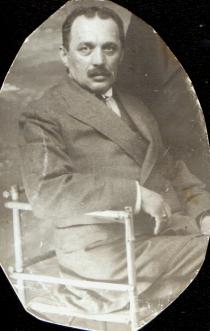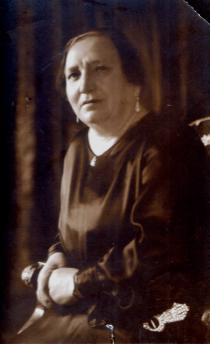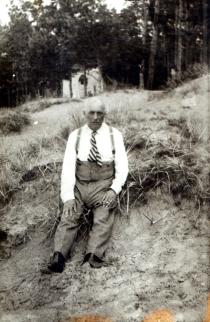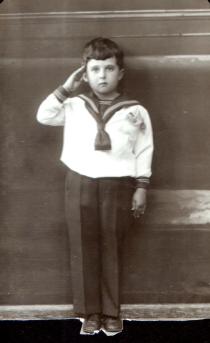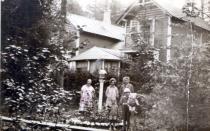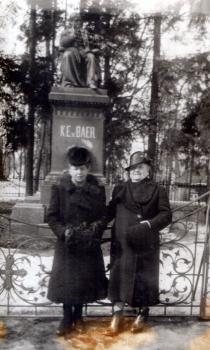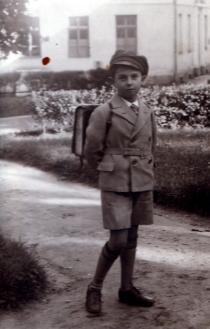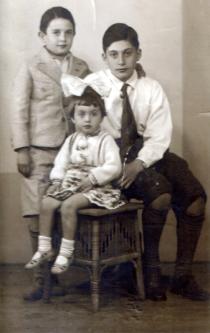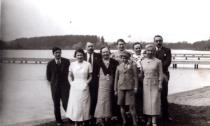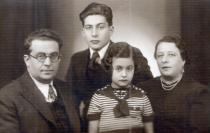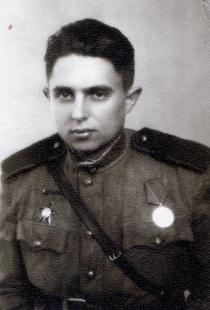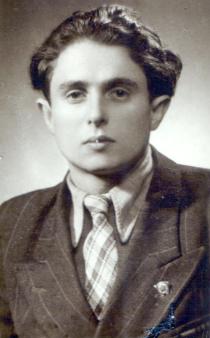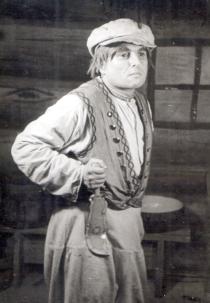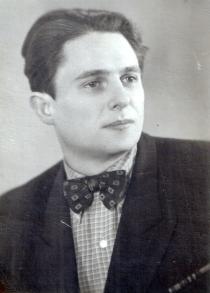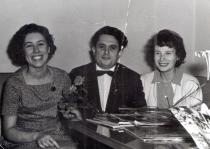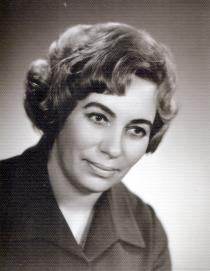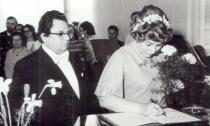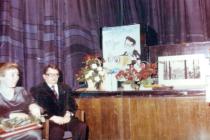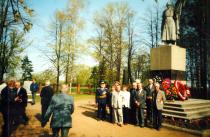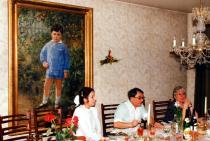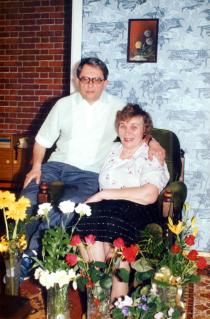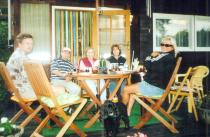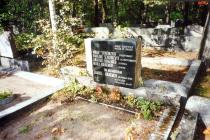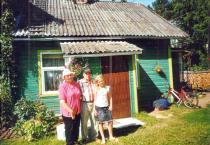That’s me as a soldier of the Estonian Corps of the Soviet army. I gave this picture to my cousins Aviva and Ilana, when I was in Tallinn with the Estonian Corps in 1945 . There I happened to see my relatives. It is written overleaf: "To Aviva and Ilana from Toli , 1945."
In 1942 I found out about the Estonian corps being formed in Ural. I went to the military enlistment office with the request to join the lines as a volunteer. I was 17 and I was assigned to the Estonian corps. I started military life. Our Estonian corps was sent to Velikiye Luki. The town was captured by Germans, and the Soviet army encircled it. The winter was frosty and we had to walk 100 kilometers. At last, we got there. The Velikiye Luki battle started. Our corps was in the lines. We were supposed to hold the part of the position, where there were no Soviet troops for the Germans not to be able to break through the town. There were fierce battles. There were a lot of casualties from both sides. Finally, we ousted fascists from the town.
Then we were sent to Leningrad. We were sent to Leningrad. When besieged Leningrad was liberated, our Estonian corps was sent farther, in the direction of Estonia. At that time the Russian and Estonian border was not along Narva, but about 12 kilometers away from it. We crossed the border. I saw Estonian guys taking earth in their hands and kissing it. We were happy to take part in the liberation of Estonia. Near Narva we had to hold a battle with the German militaries from the SS Estonian legion. Thus both belligerent parties put Estonians in the battle near Narva. There was the Estonian corps on our side, and the Germans had the Estonian legion. Estonians fought against Estonians. There were cases when the members of one family fought for different armies. There were 30,000 Estonians, clad in German uniforms. It was horrible, inhuman. We stood at one bank of the Narva, and they were at the opposite one. In the evening, during the intermission between the battles, one and the same Estonian songs were sung at both banks. There were cases when some Estonians swam from the opposite bank to join us.
We went on to liberate Estonia from the fascists. Our corps took part in the liberation of Tartu. Then we liberated Tallinn. Our tank column was the first to enter Tallinn. But my regiment passed by Tallinn and went to the island. There was the Klooga camp on our way and it was the first time I saw what the fascists had done on our land. It was a terrible concentration camp.
We were to head to the islands. There were fierce battles. The Germans stuck to the isle as they had a real chance to get to Finland by ships. By that time Finland was out of the play. Apart from the Estonian corps a Russian military unit was also taking part in the fierce battles. I was wounded at Sõrve Peninsula in the combat with the Germans and was sent to hospital in Tallinn aboard a Finnish ship.
When I was discharged from the hospital, our corps was sent to liberate Kurland. Our commanders were in a hurry to do away with the Germans there and to put an end to the war, but the Germans hung in there, fighting desperately for their other units to be able to get evacuated. We moved very slowly. The area was open without any place to hide. There were a lot of casualties and it was very scary as many soldiers from the Estonian corps managed to drop by in Tallinn and see their relatives. And still, some of them were to face death.

